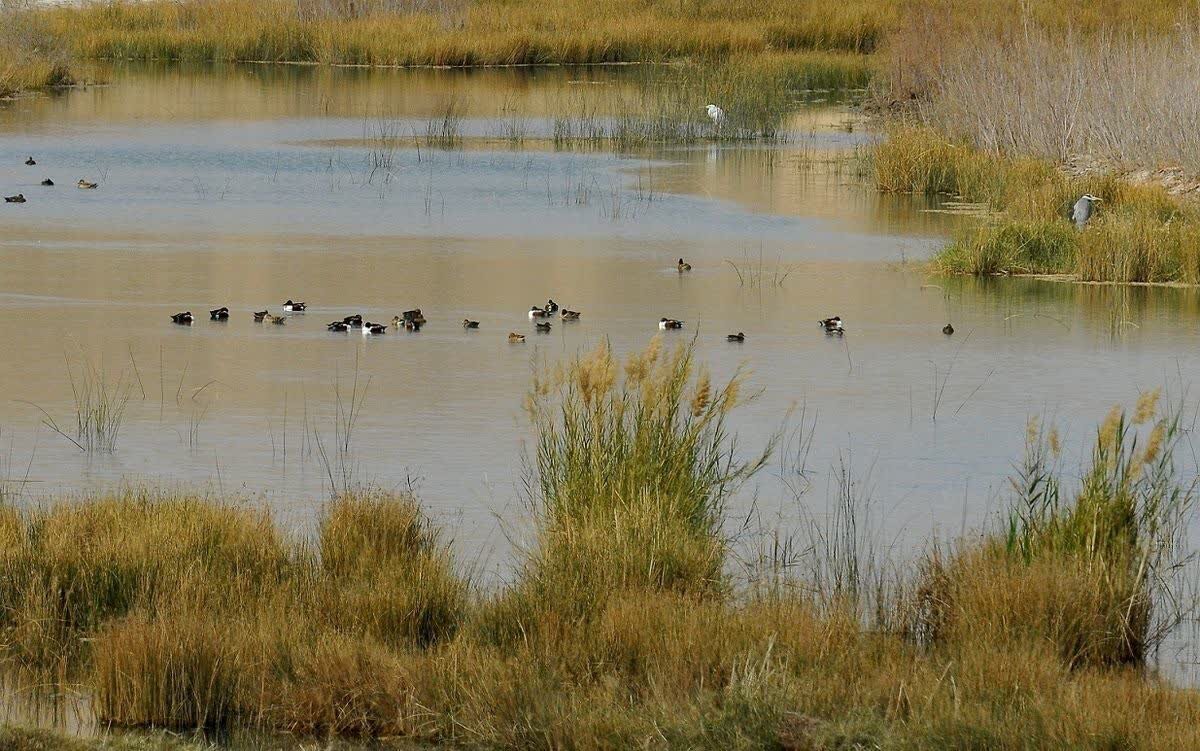Gandoman wetland a crucial stopover for thousands of migratory birds

TEHRAN –Located in Borujen county, southwestern Chaharmahal-Bakhtiari province, Gandoman wetland is one of the most important habitats for migratory birds in the country, hosting some 40,000 birds from across the globe.
In February, the wetland was registered as Iran’s 27th wetland of international importance. Stretching to 1,070 hectares, it is one of Iran’s top five birdwatching sites and the country’s most important permanent habitats for migratory birds.
The shallow depth and diverse vegetation of the wetland have made it a crucial stopover point for migratory birds. The site is particularly notable for its plant diversity, with 129 species from 32 families and 87 genera identified. It is one of the most important habitats in Iran for the endemic Zagros pupfish.
All these features have made the wetland a favorable location for birds to stop by the wetland on their long journey from southern Africa and India to the north and Siberian regions, annually, IRIB reported.
Moreover, around 5,000 migratory birds, including ducks, herons, and sandpipers, are nesting and breeding in Gandoman wetland. The birds fly to the wetland all year long, using it as their temporary habitat.
As fall approaches, a new wave of migratory birds wing to the wetland, and the migration will go on till the beginning of winter.
The wetland is an important wintering habitat for several bird species, including the critically endangered sociable lapwing and the vulnerable common pochard.
While drought, climate change, fire, and pollution pose threats to the wetland, experts regularly monitor the site in accordance with the Gandoman Wetland Management Plan. Moreover, local communities play a role in mitigating such threats due to the wetland’s importance to their livelihoods and spiritual beliefs.
Gandoman Wetland is not only of environmental and ecological importance, but it also plays a key role in preserving the biodiversity of the region and the country. It is an excellent destination for birdwatchers and nature enthusiasts. Protecting this international wetland will greatly help maintain local ecosystems and mitigate environmental threats.
National plan to improve wetland conservation
In June, the Department of Environment (DOE) and the Ministry of Agriculture signed a memorandum of understanding (MOU) to launch a national plan for empowering local communities to protect and promote the sustainable use of wetlands.
The main objective of the MOU is to turn wetland protection from a government initiative into a comprehensive social responsibility by focusing on training, empowering, and involving local communities.
Wetlands represent a vital ecosystem and are known as the kidneys of the Earth. These ecosystems, among other things, provide clean water, protect against floods, restore underground aquifers, and maintain surface water flow during dry periods.
Iran’s geography is distinct, teeming with diverse landscapes. The country has various wetlands, 27 of which were listed in the International Ramsar Convention.
On December 10, 2024, Mehri Asna-Ashari, an official with the DOE, said the conservation project of Iranian wetlands has resulted in a 27.5 percent decrease in irrigation water consumption while increasing agricultural products by 22.5 percent.
“Currently, 49 wetlands, covering around 22 percent of the whole wetlands in the country, are being conserved in the form of native ecosystem management partnership,” IRNA quoted Asna-Ashari as saying.
She made the remarks at the meeting of the steering committee of the international project for the conservation of Iranian Wetlands.
MT/MG
Leave a Comment